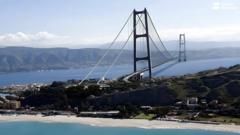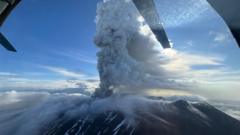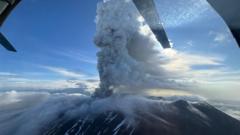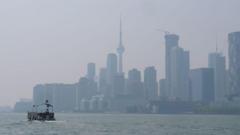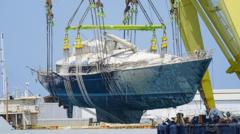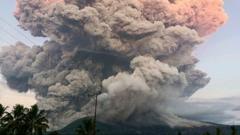The renowned Mount Etna in Sicily erupted recently, producing significant ash clouds and prompting precautionary measures, although immediate threats to safety appear limited.
Mount Etna Erupts: Ash and Smoke Plumes Tower Over Sicily
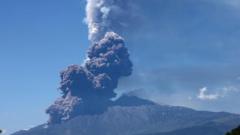
Mount Etna Erupts: Ash and Smoke Plumes Tower Over Sicily
Explosive activity at Italy's Mount Etna raises concerns but significant danger remains low
Italy's iconic Mount Etna has once again captured attention as it erupted early on Monday morning, unleashing substantial plumes of ash and smoke into the atmosphere. Images and videos captured from Sicily depict the mountain in a fiery display, with volcanic materials dramatically spilling out.
According to Italy's National Institute of Geophysics and Volcanology (INGV) Etna Observatory, the eruption began with a series of explosions that increased in intensity throughout the early hours of the day. Although the extent of the eruption is still being assessed, initial reports indicate minimal disruption to the surrounding area.
As one of the world's most active volcanoes, Mount Etna experiences regular eruptions, and these events typically inflict little harm. The latest eruption appears to originate from the southeast region of the volcano, specifically near a known vent measuring approximately 200 meters in width. Video footage circulated on Monday revealed a rapid flow of pyroclastic material—consisting of ash, gas, and rock—descending the slopes, a sign of potential geological instability.
Experts believe that part of the volcano's crater may have collapsed, resulting in the accumulation of these materials. While pyroclastic flows have the potential to pose significant hazards, authorities have not reported any imminent threats to safety. Current INGV updates indicate that volcanic activity has yet to extend past the Valley of the Lion, a typical tourist stopping point before reaching the summit.
The eruption was first detected around 00:39 local time (22:39 GMT), and geologists classified it as a "Strombolian" explosion—characterized by frequent bursts due to gas accumulation within the magma chamber. This type of activity often flings volcanic material into the air, similar to releasing pressure from a fizzy beverage. Although these eruptions can pose risks to aircraft, flight disruptions resulting from the activity have since been reevaluated.
A red alert was initially issued earlier in the day regarding flight safety, but this notification was later downgraded as conditions stabilized. In response to the ongoing volcanic activity, local authorities have cautioned tourists to maintain a safe distance from the flowing lava and the area surrounding Mount Etna. The volcano last gained significant media attention during an eruption in February, which led to numerous flight diversions at Catania airport due to ash clouds.


